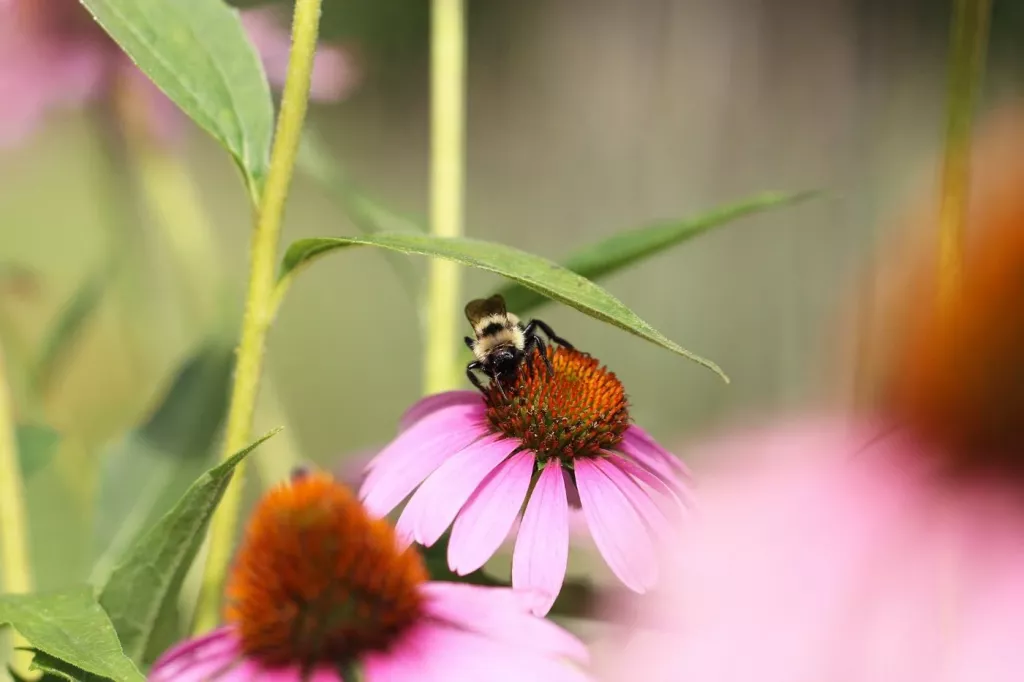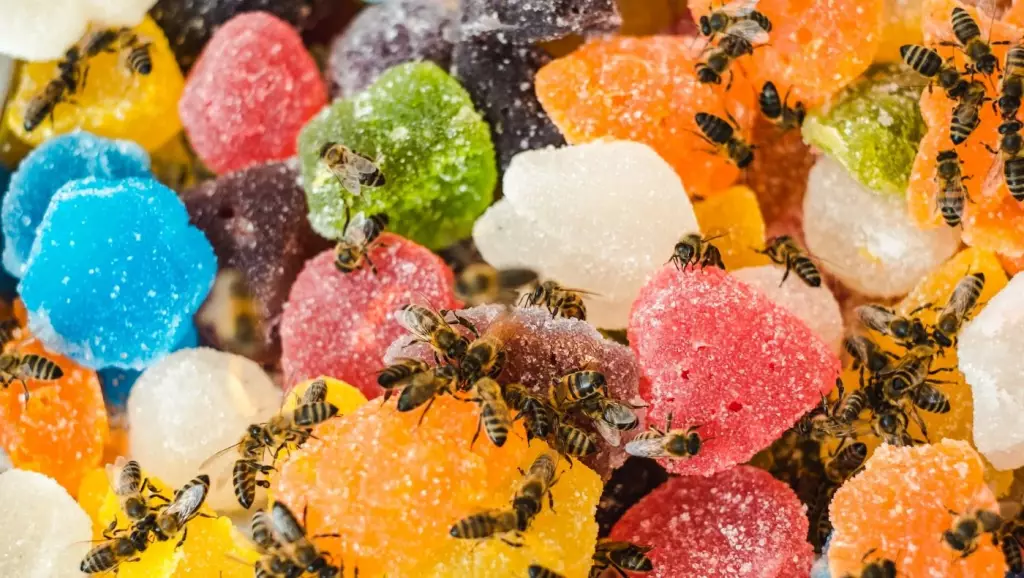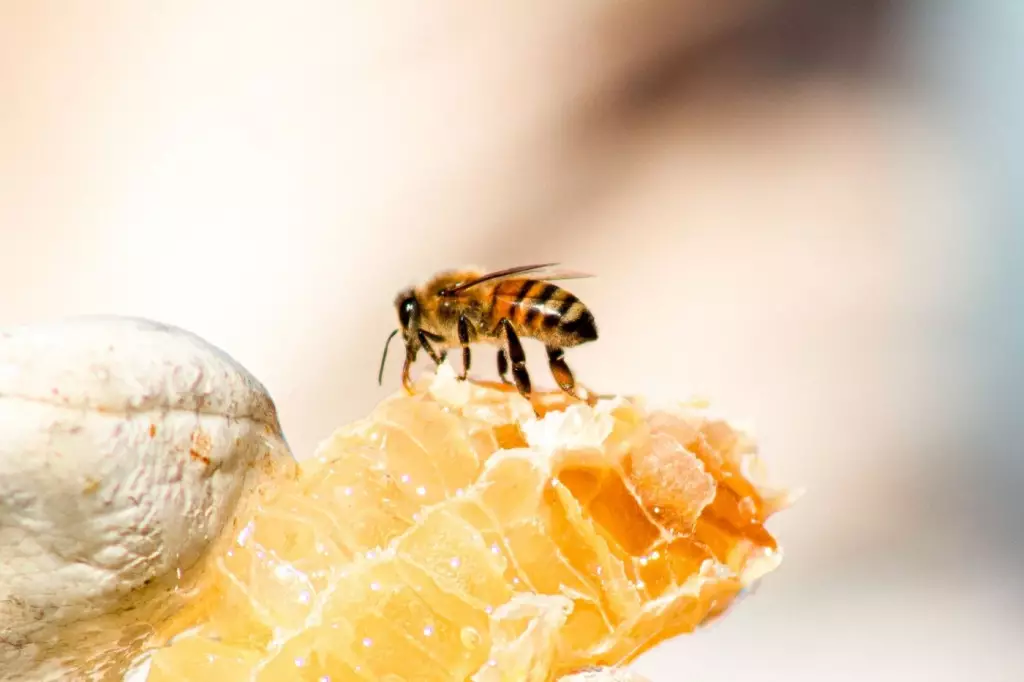What Do Bees Eat When There Are No Flowers?
While all the flowers in the world can't disappear at once, flowers only bloom by season, either in spring or summer. If it's not spring or summer, you might ask, what do bees eat then? In this article, we'll look at the alternative diet of bees when there are no flowers.
When flowers are not available, bees eat their own-made honey and will sometimes eat over-ripe fruits, sweet secretions of plants, or the sweet secretions of insects called "honeydew." Some wild species of bees eat meat, while bees kept in apiaries feed on sugar syrup.
These feeding preferences of bees are largely affected by seasonal changes, but also because generally, there's a scarcity of flowers and plants which they can feed on. Continue reading to learn how bees survive a diet without flowers.
Summary
- Bees can survive without the nectar and pollen from flowers.
- Aside from flowers, they can also eat various foods such as over-ripe fruits, extrafloral nectars, and honeydew from insects.
- Bees are argued to be omnivores.

On this page:
Bees Will Feed on Anything Sweet
We all know that bees don't just visit flowers because they are attracted to them, but rather because they get their food source from flowers, which is nectar and pollen. You might wonder why bees have an intense preference for nectar. A study has shown that bees typically have some sort of sugar rush.
Bees have been discovered to have a pair of taste neurons activated by sugar. Once these taste neurons are activated, bees are inclined to feed on the same source of nectar over and over. When the stimulus has declined, the bee will fly out to find another nectar-rich source.
During mid-spring to mid-summer, many flowers are in bloom, the nectar flow is good, and therefore honey production is abundant. A good nectar flow indicates more food for bees. It's also a good time for them to store honey in their hive.
The main diet of honeybees is usually pollen, which they consume as a source of protein, and nectar, the sweet liquid that flowers produce, which helps energize bees and provides a source of water for their body.

During winter, however, little to no flowers will be in bloom, and bees cannot go out of their hives to forage. This is the reason why bees make honey. They make honey to store up as food to survive through the winter months. Bees are wise and prepared creatures, as honey isn't the only thing they store in preparation for winter. They also store surplus pollen and nectar in cells of wax combs made by worker bees.
But when all these resources have been completely consumed, bees resort to different sources for their sugar fix. Some examples are as follows:
Over-ripe fruit
Honeybees are also known to prefer certain fruits. They are seen feeding on fruits such as plums, peaches, grapes, apples, figs, and pears, especially when these are overripe, as they emit a sweet odor that bees like.
Sweet secretions from extrafloral nectaries of plants
If flowers are not in bloom, some plants can still secrete sweet nectar through their extrafloral nectaries.
Honeydew from aphids
One study has shown that in nectar dearth instances, bees will feed on sugary honeydew secretions from insects like aphids that feed on plant sap.
Overall, when nectar and pollen from flowers are not available, bees will take on anything as long as it is sweet to their liking.

Are Bees Strictly Vegetarian?
Bees have long been known to be associated with flowers and plants, so when we identify what type of eating preferences they have, we easily assume that they are vegetarians or herbivores.
However, bees are argued by scientists to be omnivores. Much evidence has led scientists to believe that bees, while their main diet relies on nectar and pollen, will resort to eating flesh because it is needed for survival.
One good example of a bee species that questions the herbivorous claims about bees is the vulture bee. These are species of bees whose main protein source is not pollen but flesh.
While they still collect nectar from plants to make honey, their protein sources are dead animals such as lizards or chickens. Vulture bees resort to this flesh-eating method since they do not have specialized hairs in their legs that can collect pollen.
Another piece of evidence that pinpoints bees as omnivores is the case of cannibalism in honeybees. Since honeybees practice hierarchy, only the queen can lay an egg. However, there are rebel workers that mate and lay eggs, and as a consequence, the eggs they lay are eaten by fellow workers to ensure that only the eggs laid by the queen are being taken care of.
In times of pollen scarcity, some worker honeybees consume their larvae. This is also a form of population control inside the hive.
How Long Can Bees Survive Without Pollen and Nectar?
In cases when a bee gets trapped indoors, it can survive for a day without any source of pollen. This is because bees have two stomachs - one is the actual stomach for digestion, and one is called the honey stomach, storing not honey, but nectar instead. In an emergency, the bees can digest the nectar stored in the honey stomach through a valve that connects the two stomachs.
Feeding Bees Dry Sugar and Sugar Syrup
In beekeeping, it is important to frequently check on your bees. While they can fend for themselves, there may be instances when nectar is scarce due to non-blooming periods of flowers and the honey storage in the hive is low. In these cases, your colony may starve.
To prevent starvation, you can feed the bees in the meantime by:
- feeding them white table sugar
- feeding them syrup made with white sugar.
These methods can keep bees alive for an extended period of time until flowers bloom again.
Feeding bees dry sugar
There are several things to consider when feeding bees dry white table sugar:
- Only medium to strong bee colonies can be fed dry white table sugar. This is because bees need water to mix the sugar with, so they will have to outsource water from neighboring resources or use the condensation inside the hive. Weak bee colonies may further weaken while trying to find sufficient water resources.
- The best time to feed bees dry white table sugar is during the autumn and spring, when the humidity is relatively high. It is difficult for bees to dissolve the crystals during the summer.
- A starving colony should not be fed dry sugar, but sugar syrup instead. Liquifying the white table sugar will require the colony's energy, but giving them sugar syrup instead will boost their energy to manage functioning first.

Feeding bees sugar syrup
Sugar syrup is also considered a staple for bees kept in apiaries. This appears to help them when honey storage in the hive is low, and nectar is scarce at the moment. Beekeepers usually resort to a 1:1 ratio, meaning 1 part sugar and 1 part water.
The 1:1 sugar syrup mixture is used for the following purposes:
- increase honey stores
- stimulate brood rearing
- promote drawing of the comb foundation
The mixture is simply made by heating water in a container. When the water boils, the container must be removed from the heat source. It's important to note that sugar will only be added to the pre-heated water after the container has been removed from the heat. When sugar is added, consistent stirring must be done to dissolve the sugar crystals.
Never boil the water once sugar is added. Caramelized sugar is toxic and cannot be eaten by bees.